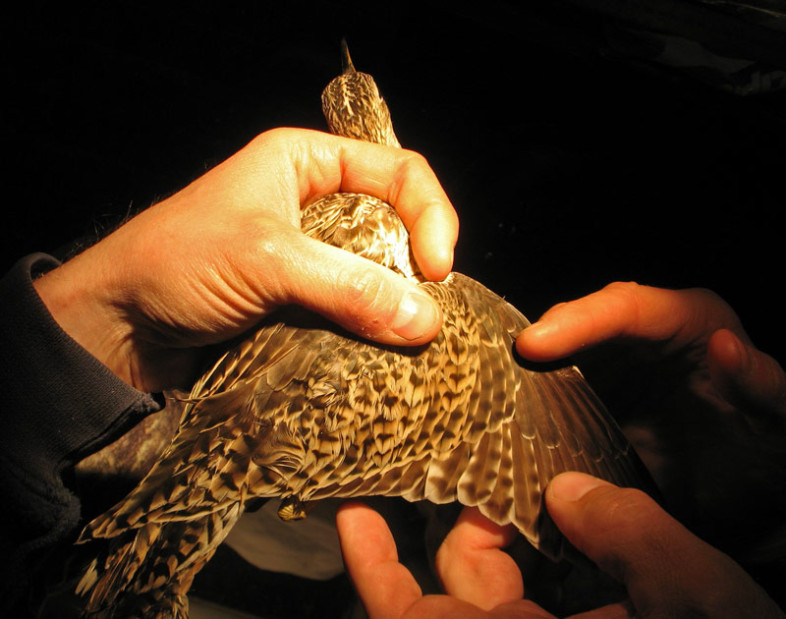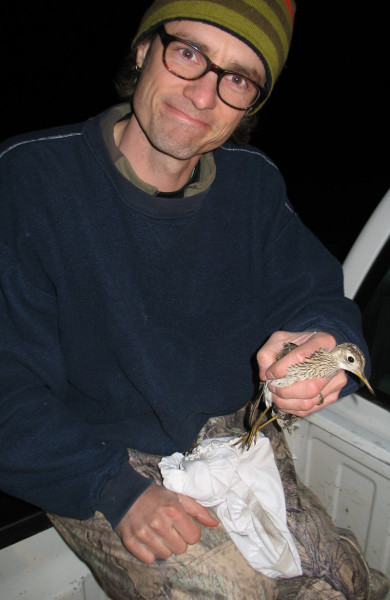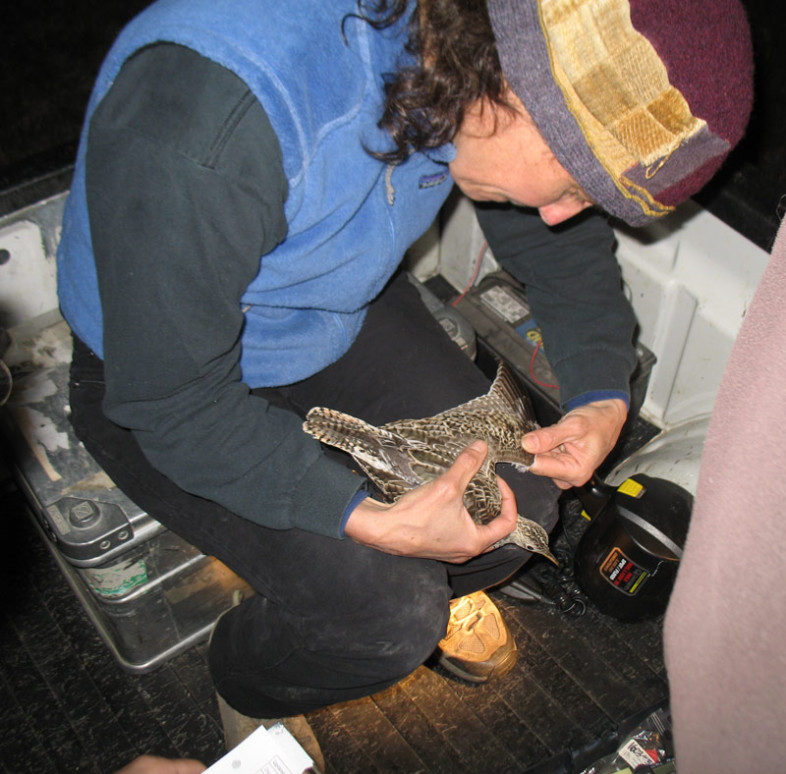The culmination of months of planning brought us to Kansas to launch the grassland bird geolocator project. Our goal is to reveal the migratory routes, timing, and the wintering grounds of grassland birds. The first mission is to deploy geolocators on Grasshopper Sparrows and Upland Sandpipers at six sites across the country — starting with Kansas.
Dr. Jason Hill and I met up with two of our field crew leaders at the Kansas City airport (which is not actually in Kansas). Jason came to VCE in January to serve as the project leader, and has been working diligently for months to prepare for this field season. We all headed to the tallgrass prairies for a few days of training on bird capture and geolocator deployment.
The drive to our site was breathtaking and heartening. With project leader Jason and field crew leaders Alison Nevins and Dan Inserillo, I watched the glowing red sunset over the Flint Hills as we drove west. After years of reporting on the documented declines of grassland birds, I eagerly took in the seemingly endless, rolling hills of the largest blocks of native grasslands left in the country. The rocky Flint Hills are inhospitable to the plow, and offer refuge amidst the legions of croplands that have replaced over 95% of native grasslands.
Our first stop was the great Konza Prairie, a destination for any grassland bird enthusiast, and especially researchers. Set up as a mosaic of large-scale experimental plots and hosting 30-50 research projects each year, Konza showed me the greatest densities of Upland Sandpipers that I have ever seen, with a bison backdrop to boot. Our collaborator Dr. Brett Sandercock of Kansas State University knows both Konza and Upland Sandpipers like the back of his hand. He’s been capturing “uppies” for years on Konza for his research, making him the world authority on their capture. It’s an art form that he developed through trial and error, and we came to him to benefit from his hard work and learn his technique.
Night capture is usually relegated to nocturnal species like owls, but the best way to outsmart Upland Sandpipers is to take them by surprise. With the needed permits in hand, we headed out in Brett’s truck into the darkness of the vast prairie, shining lights in search of sandpipers roosting on the ground along the grassy back roads of the Konza. Often there was a male and female, already paired up, standing about 4-5 feet apart. Some had their heads tucked and resembled rocks, others were more easily discerned with the tell-tale long neck topped with what looks like an undersized head.
We honed our ability to discern birds from flowers, sticks, and rocks that can look remarkably bird-like in the glow of the lights. Large, custom-made nets at the end of a pole, various lighting techniques, and a tactical approach are among the ingredients to this recipe. If all goes well, you end up with a 150-gram bird under your net. It takes practice, finesse, and a certain je-ne-sais-quoi.
In two nights we captured four sandpipers, with countless misses in between. Brett consoled us. “You’ll get better,” he said. “You just have to pay your dues.” Indeed, by the end of the second night we were already feeling more comfortable with the technique, and we said our goodbyes to Brett with waxing confidence in our ability to carry on next year, when we will deploy GPS geolocators on 22 Upland Sandpipers.
Our next stop was the Fort Riley military base, just down the road from Konza. Our goal was to train in our field crew leaders for this season, and to make a harness for attaching geolocators that would be just the right fit for grasshopper sparrows. Stay tuned for part two of our field season prep in the prairies.




I’m guessing the “I ” in the article is Roz. But I do like to know who the author is on each article. Maybe others would too. Thanks.
Hi Elinor, is Roz’s byline (under the headline) absent in what you’re seeing on screen?
Hey Bryan,
I was just thinking that perhaps she is alluding to the email version if she is a subscriber. There are ways to resolve that as well. Check with Gabe…
Jason (from Postmatic)
Jason, you are right. It was the email version with no author name.
Elinor
Hi, the author to all of our blogs is on the right column at the top. This blog was by Roz Renfrew.
Great post Roz!
On behalf of the birds and those of us who understand the importance of the work and effort involved, thanks.
Keep posting and we’ll keep sharing it.
Thanks Michael! And you certainly do understand the work and its importance, as someone who has dedicated countless hours towards bird research, monitoring, and education. You have some big fans at VCE!